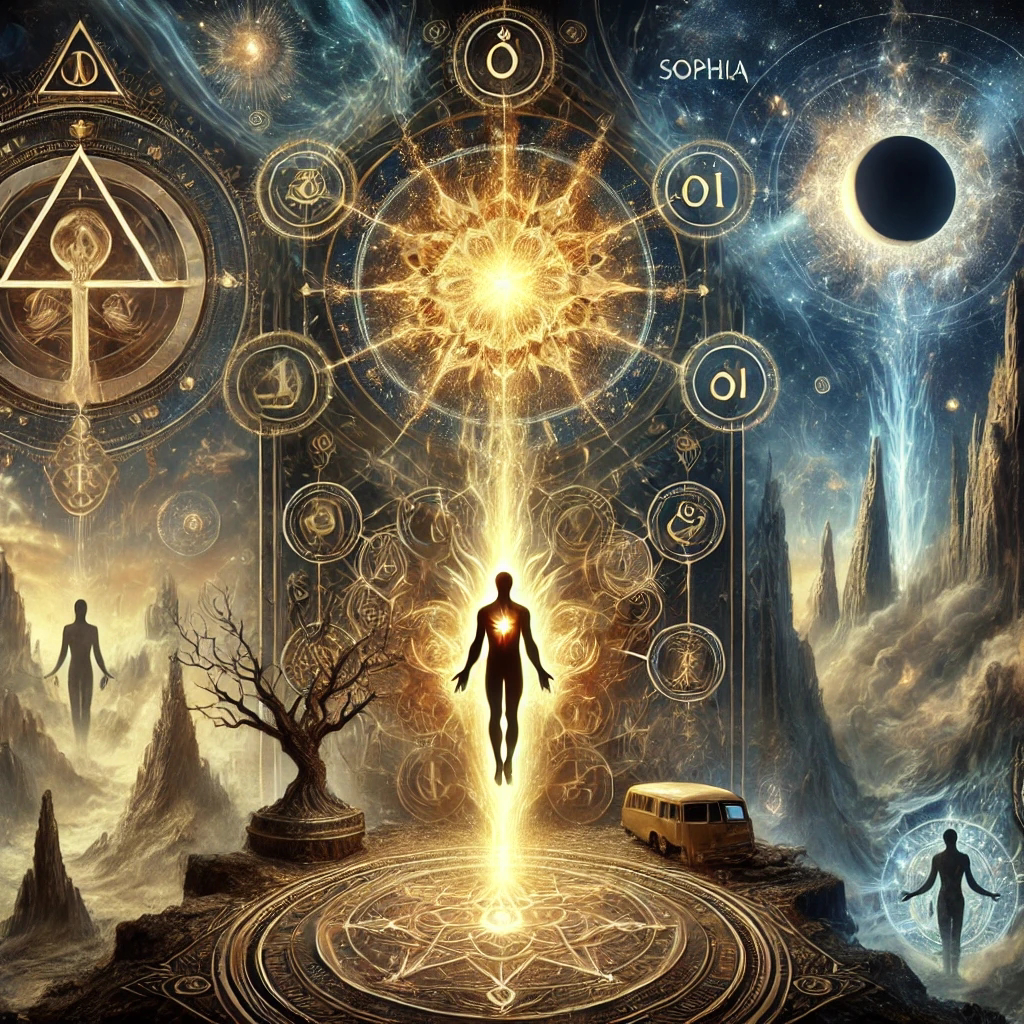Introduction
Gnosticism and Jungian psychology are deeply intertwined, both exploring the nature of the self, the unconscious, and spiritual transformation. Carl Jung found profound psychological insights in ancient Gnostic texts, seeing them as symbolic representations of individuation. His analytical psychology aligns with the Gnostic idea of awakening to a deeper reality hidden within. Understanding this connection offers a powerful lens through which to explore self-discovery and inner transformation.
The Gnostic View of Reality
Gnosticism presents a radical take on reality, asserting that the material world is a prison created by an ignorant demiurge. Unlike traditional religious views that see creation as divine, Gnostics believe the physical world is a realm of illusion and suffering. True knowledge, or gnosis, is the key to escaping this entrapment and reconnecting with the divine source. This knowledge is not intellectual but experiential—a direct realization of one’s divine spark.
Jung’s Interest in Gnosticism
Jung saw Gnostic mythology as a profound expression of the unconscious psyche. He believed that ancient Gnostic symbols, especially those related to divine knowledge and the struggle against oppression, mirrored deep psychological processes. The idea of waking up from illusion aligned with his concept of individuation—the journey toward self-awareness and wholeness. For Jung, Gnosticism provided a rich symbolic language to describe psychological and spiritual transformation.
The Self and the Divine Spark
In Gnostic thought, each human possesses a fragment of the divine trapped within the material world. Jung equated this divine spark with the Self, the central archetype of wholeness in his psychology. The process of individuation mirrors the Gnostic journey—shedding false identities to uncover the true, divine nature within. This deep inner work leads to what both Gnostics and Jungians see as ultimate liberation.
The Shadow and the Archons
Jung’s concept of the shadow—the repressed, unconscious aspects of the psyche—parallels the Gnostic idea of archons. Archons are deceptive forces that keep humanity enslaved, much like psychological complexes that dominate our behavior. In both systems, the key to liberation is confronting and integrating these forces rather than remaining blind to them. By acknowledging the shadow, one can overcome unconscious conditioning and reclaim personal power.
The Demiurge and the Ego
The Gnostic demiurge is a false god who believes himself to be supreme, much like the ego in Jungian psychology. The ego, when unchecked, creates illusions of separateness and control, leading to suffering. Jung saw the dissolution of ego-identification as crucial for individuation, similar to the Gnostic quest to transcend the demiurge’s deception. True self-knowledge requires dismantling these false structures to reconnect with a deeper reality.
The Role of Symbols and Dreams
Both Jung and the Gnostics understood symbols and dreams as doorways to hidden knowledge. Gnostic texts are filled with symbolic narratives, much like dreams speak in the language of the unconscious. Jung emphasized active imagination and dream analysis as tools for decoding these messages from the deeper self. By engaging with these symbols, one can access transformative insights that lead to true inner awakening.
Alchemy and Transformation
Jung viewed alchemy as a metaphor for psychological and spiritual transformation, closely aligning with Gnostic thought. The alchemical process of transmuting base metals into gold mirrors the journey of self-realization. Just as Gnostics sought to reclaim their divine spark, Jungian alchemy represents the integration of all aspects of the psyche. This process ultimately leads to individuation—the realization of wholeness and inner unity.
The Feminine Aspect: Sophia and the Anima
Sophia, the Gnostic goddess of wisdom, plays a crucial role in the process of awakening. She represents the divine feminine, often associated with intuitive knowledge and the longing for reunion with the divine. Jung saw Sophia as an archetype of the anima, the inner feminine presence in men that leads them toward wholeness. This sacred feminine force is essential in breaking free from illusion and reconnecting with the true Self.
The Journey of the Hero and the Gnostic Savior
Both Gnostic myths and Jungian psychology present the path of self-discovery as a hero’s journey. Gnostic saviors, like Christ in esoteric traditions, guide individuals toward inner enlightenment. Jung saw this as the role of the Self—leading the individual through trials of integration and transformation. This journey is one of descent into the unconscious, confrontation with darkness, and ultimately, spiritual rebirth.
Psychological Liberation and Spiritual Freedom
The goal of both Gnosticism and Jungian psychology is liberation—not from physical chains, but from mental and spiritual ignorance. Individuation is a process of breaking free from collective conditioning and false identities. The Gnostic call to awaken from the demiurge’s illusion is echoed in Jung’s insistence on moving beyond mere ego-consciousness. Both systems emphasize that true freedom lies in self-knowledge and integration.
Modern Implications of Gnostic-Jungian Thought
Jungian psychology offers a bridge for modern seekers to access ancient Gnostic wisdom. In a world dominated by materialism, the Gnostic message of inner transcendence is more relevant than ever. Many people struggle with existential emptiness, and the Jungian-Gnostic approach offers a profound path toward meaning. By engaging in self-inquiry and symbolic exploration, individuals can embark on their own journey of awakening.
Conclusion
Jungian psychology and Gnostic thought both emphasize the search for hidden knowledge within. They present a roadmap for escaping illusions, integrating the shadow, and awakening to the true Self. In an age of psychological fragmentation, their teachings provide a powerful guide for personal and spiritual transformation. The call remains the same: awaken, remember, and reclaim the divine spark within.




